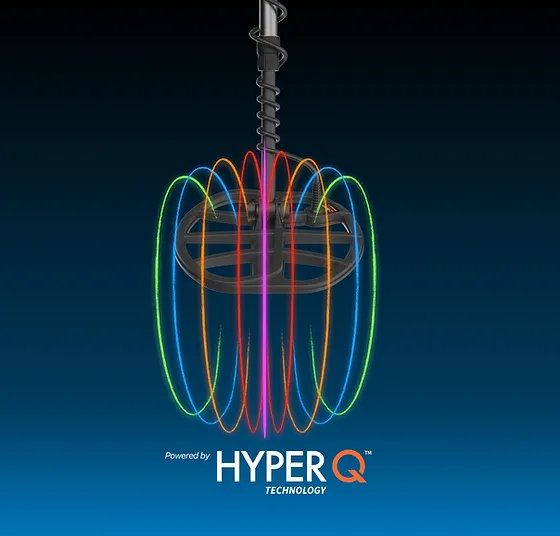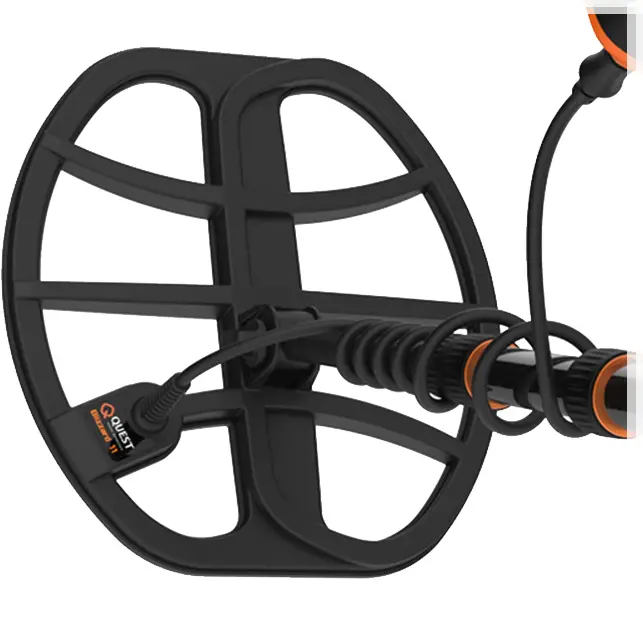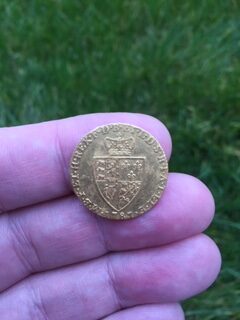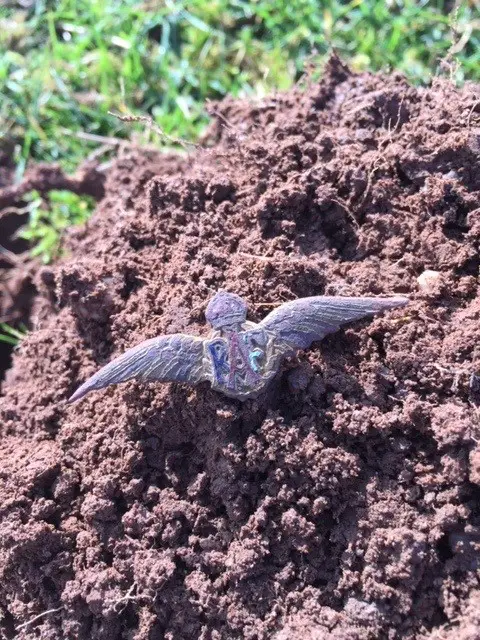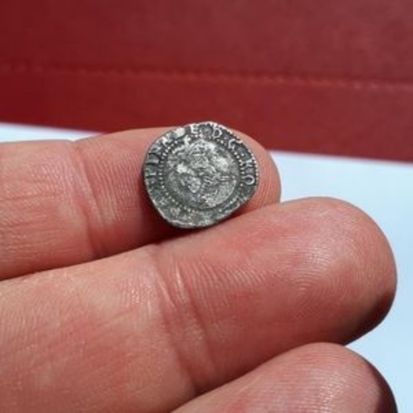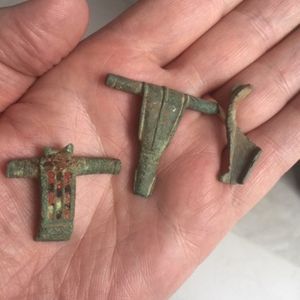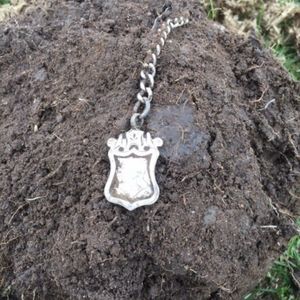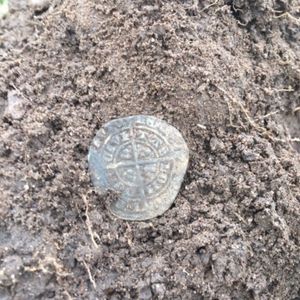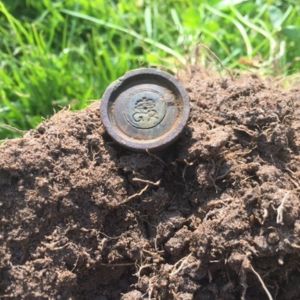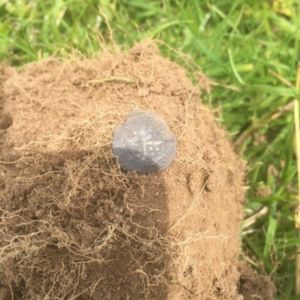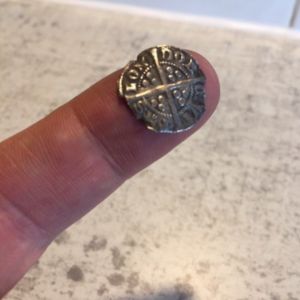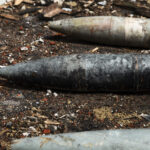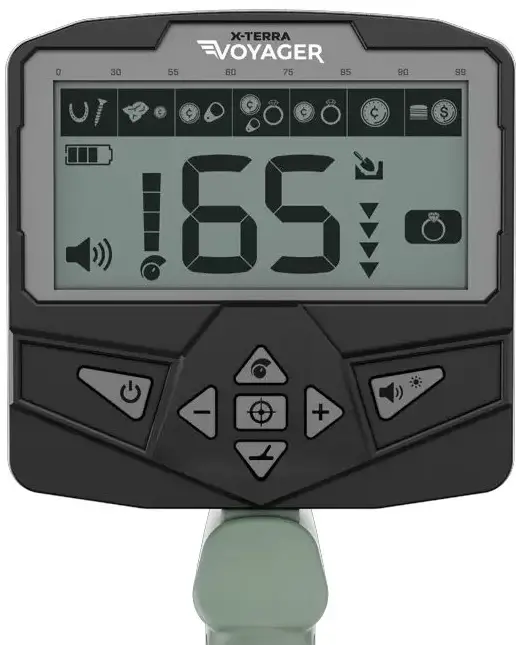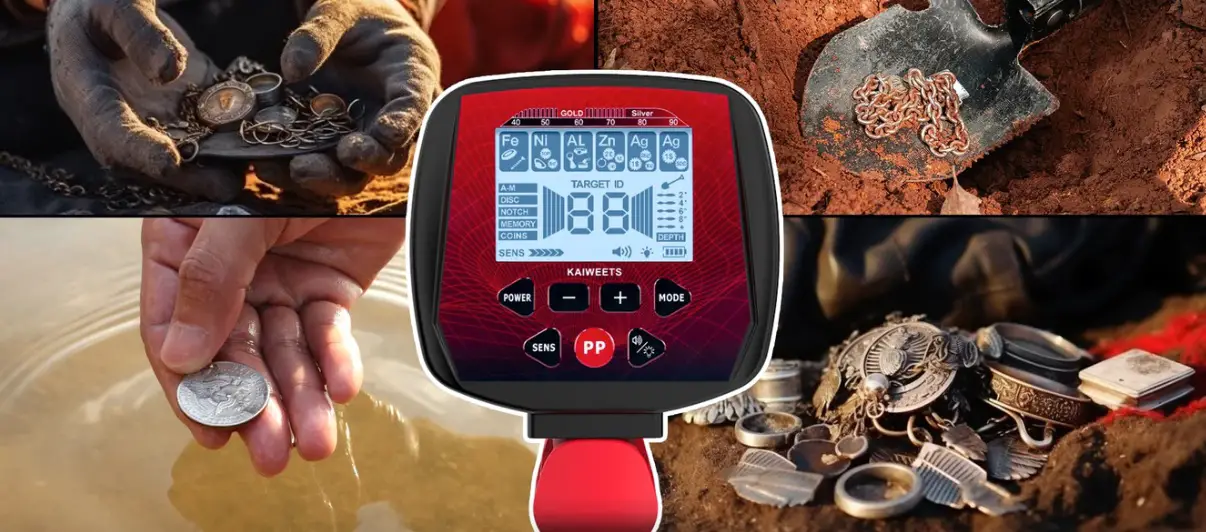Quest V80 Multi Frequency metal detector
A little about Quest metal detectors first. Their goal is to push metal detector technology to give their customers the best technology possible at the most competitive pricepoint possible.
QUEST is a metal detector manufacturer that was initially founded by metal detectorists just like you and me that are fascinated by the recovery of artifacts, coins, relics and the discovery of history.
The Quest family of metal detectors and accessories encompass not only cutting edge technology but also value for money as well.
Primarily for us UK based detectorists, their european branch is located in Lippenhuizen in the Netherlands. This provides fast and efficient service for European regions and the UK.
Quest Metal Detectors and accessories are unique in concept as their designs, machine features and functionality incorporate detectorists specified features combined with Quest’s own vision.
Whether you hunt on land, in the water or on the beach, and no matter what type of treasure you are after, Quest have developed the tools to discover it.
For those who may not know, the name Quest came from over 3000 potential names for the new company submitted by active metal detectorists from all over the world.
Every year, they sponsor metal detecting rallies in different countries to encourage more people to join this hobby. They also keep investing more than 30% of their revenue into developing the latest technology.
They truely value their customers and dealers by delivering high quality metal detectors and accessories.
The Quest V80 – What is it and where is its position?
The Quest V80 at the time of me writing this article in January 2024 is the latest technologically advanced multi frequency flagship metal detector developed by Quest.
The Quest V80 has been launched alongside its smaller brother, the V60. The V60 is still a big hitter and packs a punch but just has a few less options but equally, is slightly more affordable.
In the single frequency space, Quest also have some great machines. These include the entry level Quest X5 and Q30. Read my articles on the Quest X5 here and the Quest Q30 here.
I will concentrate on the V80 for the rest of this article. So, where does the Quest V80 sit in the market and which metal detectors are its closest rivals?
In the simultaneous multi frequency arena, Minelab were the pioneers in this field with their “Multi-IQ” system. This was initially launched in their Equinox 600 and 800 detectors.
You can read more about simultaneous multi frequency here and more about the Minelab Equinox detectors here. Although still available, these have now evolved into the Equinox 700 and 900.
Minelab’s simultaneous multi frequency “Multi-IQ” engine now also lives in their mid range Vanquish series of detectors giving powerful detection for a really competitive price.
You can find more about the Minelab Vanquish range in my article here.
Because Minelab had a patent on this technology, other manufacturers could only watch and wait for the patent duration to lapse before launching their simultaneous multi frequency offerings.
The simultaneous multi frequency engine developed by Quest is called “Hyper-Q”. In the Quest V80, this strategically uses 5, 10, 15, 20, 40, 60 and 80 KHz frequencies when in “Hyper-Q” mode.
This happens to be more than the Nokta Makro Legend and Minelab’s “Multi-IQ” engine with the additional use of 60 and 80 Khz in Hyper-Q search mode.
You can read more about how metal detectors frequencies work here.
The Quest V80 – Main competitors
Within the price bracket of the Quest V80 and V60, Quest have strategically placed these machines right where the Minelab Equinox 800 and 600 sit along with the Nokta Makro Legend.
You can read more about the Nokta Makro Legend in my article here.
The prices for the base machines only and also what suppliers call “bundles” which can include additional coils, wireless headphones or pinpointers only deviate slightly.
You are at the time of this article looking at around £700 for the upper range base machines, around £550-£600 for the lower range base machines and £750 for bundles.
So, the main competitors of the Quest V80 would be the Minelab Equinox 600/800, (the 700 & 900 are more expensive!), the Minelab Vanquish 540 and the Nokta Makro Legend.
Quest, being later to launch the V80 had the advantage of seeing what the other manufacturers had produced. They played their hands earlier. This meant that Quest could improve on what they saw.
We’ve touched on one already in that Quest’s Hyper-Q engine uses more frequencies than the other manufacturers. There are other great features that the other machines lack!
The Quest V80 is already looking like an awesome machine for the money!
Get a Quest V80 or V60 from their UK distributors on Amazon here!
Quest V80 – Main features
At a glance, the Quest V80 has some great features.
Hyper-Q
The Hyper-Q engine transmits simultaneous multi frequencies into the ground ranging from 5 KHz to 80 KHz. This is more than the other manufacturers are currently transmitting.
The higher detection frequencies of 60 and 80 KHz generated by the Hyper-Q platform have been specifically designed to find smaller, fainter targets deeper with higher precision in difficult conditions.
This has been made possible by use of a high performance micro-controller unit (MCU) with a 480MHz speed Cortex-M7 STM32H750 series.
In addition, a low latency and low noise 4 channel 768kHz sampling rate chip set ADC5140 from Texas Instruments has been utilised.
In conclusion, the latest super fast digital processing.
The Quest V80 is able to generate and transmit frequencies of 5, 10, 15, 20, 40, 60 & 80 KHz thanks to its powerful MCU and analog-to-digital converter (ADC) unit.
Additionally, this combination allows for the processing of multiple targets simultaneously and quickly reporting the most valuable results.
Flat-foldable telescopic shaft system
The detector is highly portable and user friendly making it easy to collapse and extend. The patented “SUPER 3D Telescopic” shaft is flat foldable making it brilliant for storing in a backpack or car.
Comfort has been designed as a top priority. Both the control box and armrest are fully independently adjustable for personalised comfort. Additionally, all parts are fully replaceable for future maintenance.
Precision is also key as the Quest V80 has been engineered with industry-level aluminum and carbon fibre precisely machined parts. The shaft is broken down into 4 sections without compromising on lightweight design.
Gorilla Tough Blizzard series coil
In the Gorilla Tough Blizzard coil structure, the copper wires are tightly wound around a robust nylon frame.
This provides better performance if the coil is bumped on hard objects such as rocks or thick stubble.
The 11″ x 10″ Blizzard coil, known as a “DD” coil or “TurboD” offers a blade like detection field from the front of the coil to the rear.
This gives you increased target separation, depth, coverage and less ground noise.
You can read more about metal detector coil types in my article here.
Fast automatic noise canceling
Due to the high speed processing capability of the Quest V80, it enables it to run high accuracy automatic noise cancellation with just one click.
It will analyse its surroundings for any unwanted electromagnetic interferrence and select the quietest channel in just 10 seconds. This massively helps detecting deeper, faint targets.
Haptic feedback vibration
Another handy feature is the onboard low latency vibrator located in the handle. This can be useful for users that are hard of hearing or for underwater detecting where non waterproof headphones aren’t useable.
400×240 pixels display
As well as a large LCD screen, it has a special coating making it readable in sunlight. The brighter the sunlight, the more detail you will be able to read. With a viewable angle of up to 60 degrees, you won’t miss any information.
A high response speed is critical to metal detecting. The realtime results are displayed with no delay. Unlike other matrix pixel displays, the reflective LCD consumes less than 10um power, saving power.
The LCD screen is also equipped with a backlight which can be turned on in low light conditions.
Embodied gyro sensor
The Gyro sensor is a feature that sets the Quest V80 apart from anyone else. It means you can initiate a ground balance without pressing a button. Pump the coil and the Gyro knows you’re ground balancing!
It also enables an automatic power saving mode after 5 seconds of no motion. When the Quest V80 is then picked up again, it powers back up for you…..brilliant!
Accuracy is also improved by the Gyro measuring your swing speed and angle with motion detection.
Waterproof to 5m
This is perfect for beach detecting right into the surf or just ging you peace of mind if you are caught in the rain when field detecting. The external speaker is also waterproof!
USB Re-chargeable
No more having to replace batteries all of the time. The Quest V80 comes with a USB charging cable to charge the internal batteries. The 5600 mAh batteries provide a 6-8 hour runtime depending on use.
Control screen information
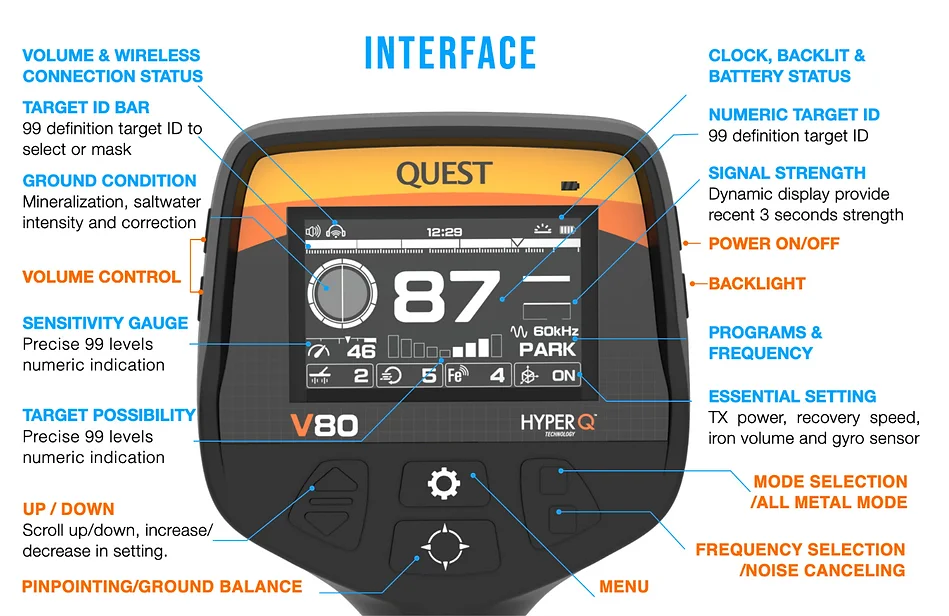
Quest V80 Search Modes
The Quest V80 (and V60) have a selection of search modes. These now simplify massively the setup process of the machine depending on your location, conditions and target types.
Park Mode
As its name suggests, this is the preferred search mode for more busy, high traffic areas where there is a higher chance of finding trash. This will have a higher trash discrimination setting.
Field Mode
This will be probably be one of the most used settings if you plan on search your own permissions like a farm land. This will have reduced trash discrimination to find more targets.
Cache Mode
Not being a common search mode, the cache mode alters the machines characteristics to find larger targets like buried hoards at increased depths.
Beach Mode
Beach hunting can be problematic for certain metal detectors. By the nature of how they work, multi frequency detectors cope with the wet, salty conditions with ease.
The beach mode will tweak and adjust the way the V80 internal engine works to maximise the stability in the harsh conditions of a wet, salty beach, even up to and into the surf to find lost jewellery.
Gold Mode
Not a often used mode in the UK but useful if you are in the US or Australian gold fields. The other modes will find all find gold jewellery. This mode specifically finds the smallest of nuggets in harsh, mineralised conditions.
Quest V80 Key Features
Ground balancing
Being able to ground balance a machine is a key feature to maximise its performance. Ground conditions can change depending on its historical use.
This can be from naturally occuring mineralisation or a build up over centuries of use by people and general working. All of which can make metal detection very difficult.
Ground balancing a metal detector in simplistic terms basically “nulls” or “subtracts” the ground from the detectors search field so it only sees targets, not the ground.
Noise Cancelling
Noise cancelling helps to quieten down a metal detector from external electromagnetic interference such as underground cables, mobile phone masts or overhead power lines.
All of these can cause a detector to go mad making it very difficult to distinguish a target from interference. This feature “tunes out” this external noise making detecting easier.
Recovery Speed
This feature allows you to adjust how fast you want the V80 to recover between target detection. For example, this could be the difference between detecting on a busy roman site or on open land.
A busy roman site may have great targets inbetween iron trash left by romans. A faster recovery speed inbetween the iron helps pick out the good targets.
A slower speed can be selected typically on a much quieter open pasture field. Generally speaking, choosing faster speeds makes detecting deeper targets more difficult.
Slower speeds helps to detect deeper targets but may miss good targets in a busy environment. It is a key feature to be able to adjust this depending on where you are.
A top tip is to set up a machine so you can just hear the iron tones in the background. This way, you can determine how busy a site is and how fast to adjust your sweep speed setting.
Transmit Power (TX power)
A useful feature not seen on other similar machines. This gives the user the ability to adjust how much power goes to the search coil. This, like the sweep speed depends on the ground conditions.
More power means deeper detection but it can be likened to the car headlights in fog analogy. When driving in fog, you don’t have your headlights on full beam as you get white out and can’t see.
The fog can be thought of as mineralisation in the ground and the headlights as the transmit power. You would drive using either dipped or fog lights. Adjust the boost power to suit your conditions on the day.
Iron Audio
Simple but really useful. This feature allows you to increase or decrease the volume of the deep sounding iron tone. Very useful when determining how busy a site is.
It is also very useful when determining if a good target maybe next to iron when using higher sweep speeds. I use my iron tones so I can just about hear them but then turn up the good target tones.
Gyro feature
Again, unique to the Quest V80, this feature is fantastic. When left on, the Gyro can interpret what you are doing with the machine. By just pumping the coil up and down, it will ground balance for you.
It can also go into a power saving mode when it doesn’t detect any motion after 5 seconds and then quickly power up after detecting motion again.
It can also makes adjustments for your swing speed and angle to maximise detection accuracy and efficiency.
Ferrous/Non Ferrous guage
Finally, in the centre of the Quest V80 screen, a series of vertical bars can be seen. These are the ferrous/non ferrous predicability indicators.
If a bar or bars light up on the left, the V80 is telling you it’s iron. More bars to the right, it’s telling you it’s not iron. Don’t forget, you can get great non ferrous buckles with ferrous pins so it could tell you that both are present!
The Quest V80 in the field
Ottis from Hidden History Hunters Scotland has carried out a great first look video out in the field.
Quest V80 Conclusion
The Quest V80 (and the V60) are without one of the most sophisticated metal detectors out there at the moment. As we’ve seen, they include many key features not found on other multi frequency machines.
They are priced perfectly to sit in the multi frequency bracket along with the Nokta Legend, Minelab Equinox, Minelab Vanquish and Garrett Apex machines.
I currently use a Minelab Manticore. Previous to this, I used an Equinox 800 for several years. If the Quest V80 was available when the Equinox 800 was, I seriously would of been torn.
I think the Quest V80 would of won! Pound for pound, this is one of the best machines in its class and would be hard to beat!
Get a Quest V80 or V60 from their UK distributors on Amazon here!



